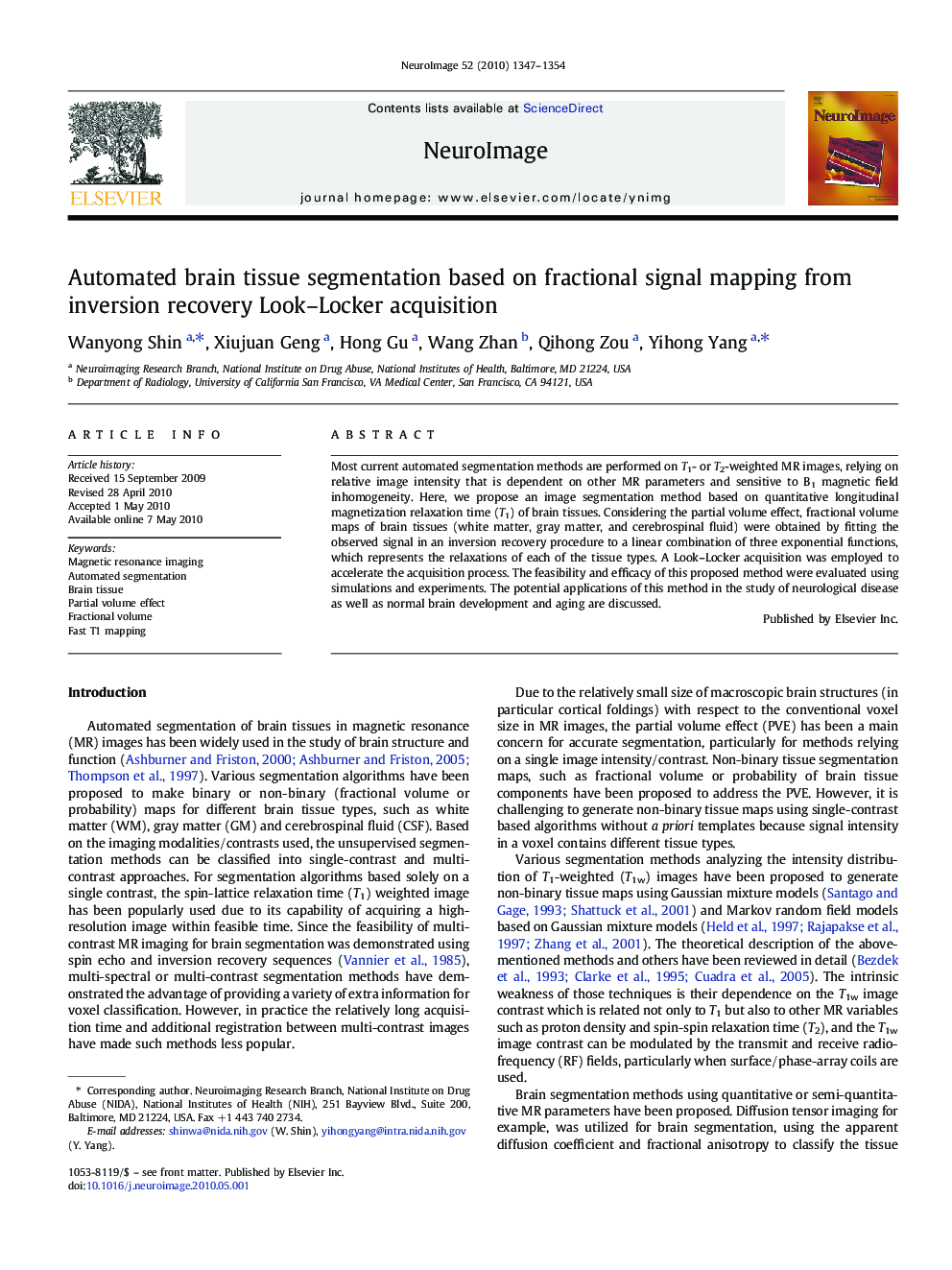| Article ID | Journal | Published Year | Pages | File Type |
|---|---|---|---|---|
| 6035305 | NeuroImage | 2010 | 8 Pages |
Most current automated segmentation methods are performed on T1- or T2-weighted MR images, relying on relative image intensity that is dependent on other MR parameters and sensitive to B1 magnetic field inhomogeneity. Here, we propose an image segmentation method based on quantitative longitudinal magnetization relaxation time (T1) of brain tissues. Considering the partial volume effect, fractional volume maps of brain tissues (white matter, gray matter, and cerebrospinal fluid) were obtained by fitting the observed signal in an inversion recovery procedure to a linear combination of three exponential functions, which represents the relaxations of each of the tissue types. A Look-Locker acquisition was employed to accelerate the acquisition process. The feasibility and efficacy of this proposed method were evaluated using simulations and experiments. The potential applications of this method in the study of neurological disease as well as normal brain development and aging are discussed.
